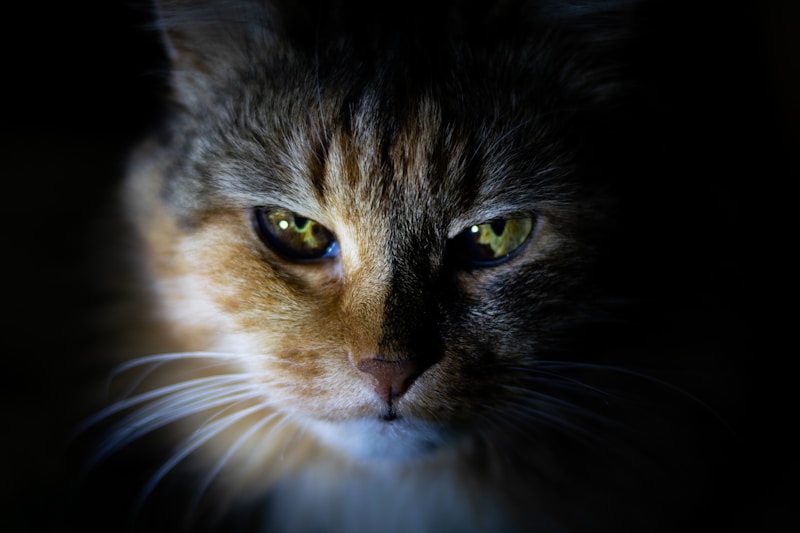Cats have captivated human hearts for thousands of years, yet their enigmatic nature continues to mystify even the most devoted feline enthusiasts. From ancient temples to internet memes, the cat has remained a symbol of grace, independence, and quiet power. The “feline mystique” is not just about a creature with soft fur and a soothing purr—it’s about the deeper psychological and cultural connections that have made cats a permanent fixture in our lives. In this article, we explore the mystique of the feline through history, behavior, symbolism, and the unique bond they share with humans.
Ancient Origins: Worship, Symbolism, and Superstition
Cats have walked beside humans for millennia, often as divine figures or supernatural entities. In ancient Egypt, cats were revered as sacred beings, particularly associated with the goddess Bastet, a deity of protection, fertility, and motherhood. To harm a cat was considered a serious offense, sometimes even punishable by death. Archaeological evidence shows that cats were often buried with their owners, mummified, and honored in art and sculpture.
But reverence wasn’t universal. In medieval Europe, cats—especially black ones—became linked with witchcraft and the occult. Their nocturnal habits, reflective eyes, and aloof demeanor bred suspicion. This dark period of superstition led to mass killings of cats, ironically worsening the spread of plague by reducing the population of their natural prey: disease-carrying rodents.
Despite the shifting attitudes over centuries, one thing remained constant: cats were never just animals. They were omens, guardians, muses, and mysteries.
The Psychology of the Cat: Independence with Affection
Unlike dogs, cats weren’t bred to serve human needs. Their domestication is believed to have been self-initiated—early wildcats likely began living near human settlements for easy access to food. In turn, humans tolerated and eventually embraced their presence, leading to a partnership rather than a servitude.
This independence is a core aspect of the feline mystique. Cats appear self-reliant and even indifferent, yet they also form deep, affectionate bonds with their humans. Research has shown that cats recognize their owners’ voices and display attachment behaviors similar to infants. But their affection is often on their own terms—making their trust feel like a reward rather than a given.
This blend of aloofness and affection fuels their appeal. A cat chooses you, not the other way around. That autonomy and subtlety draw people in, challenging them to earn their cat’s love rather than demand it.
Cats in Culture: Art, Literature, and the Digital Age
The allure of cats has deeply permeated human culture. They appear in mythology, folklore, and literature across the globe. In Japan, the beckoning Maneki-neko cat is believed to bring luck and prosperity. In Norse mythology, Freyjas, the goddess of love, rode a chariot pulled by giant cats. In literature, cats often serve as mysterious, magical beings—consider the Cheshire Cat in Alice’s Adventures in Wonderland, or the watchful, wise feline in Neil Gaiman’s Coraline.
In the modern era, cats have found new life online. From the viral sensation of Grumpy Cat to endless TikTok clips of mischievous kittens, they have become icons of the internet. The reason is simple: their expressive faces, unpredictable behavior, and unintentional comedy are tailor-made for digital consumption. Cats, somehow, always manage to steal the spotlight—without ever seeming to try.
The Human-Feline Bond: Healing and Companionship
Beneath the elegance and aloofness lies something deeply comforting. Numerous studies have shown the emotional and psychological benefits of living with cats. Their purring, for instance, has been linked to reduced stress and lower blood pressure in humans. The frequency of a cat’s purr (between 25 and 150 Hz) is also known to promote tissue healing—an attribute so remarkable that it’s been studied in therapeutic contexts.
Cats are intuitive creatures. Many owners report their cats sensing illness, emotional distress, or grief, often curling up beside them during vulnerable moments. They provide silent companionship—a soothing presence that expects little but offers much.
In an increasingly fast-paced, overstimulated world, the quiet presence of a cat offers a rare kind of peace. Their stillness is meditative; their gaze, grounding. In this way, the feline mystique is more than just charm—it’s a form of emotional resonance.
Conclusion
The mystique of the cat endures not because we understand them, but because we don’t—at least, not entirely. Their behaviors are subtle, their loyalties complex, and their presence both calming and captivating. Whether they’re curled up on a sunlit windowsill or darting through moonlit shadows, cats occupy a space between the ordinary and the otherworldly. And it is in this liminal space that their magic lies—a quiet, enduring mystery that continues to enchant us across time and culture.

